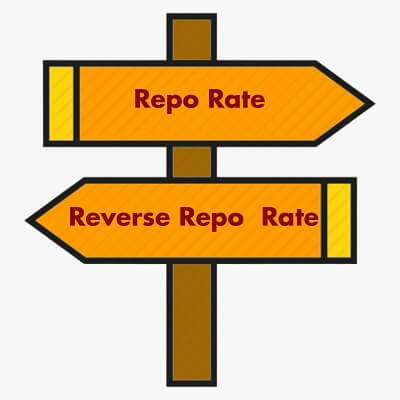What is the full form of RRRRRR: Reverse Repo RateRRR stands for Reverse Repo Rate. It is the rate at which RBI borrows money from commercial banks. During inflationary pressure, the Repo Rate and Reverse Repo Rate are set by the Reserve Bank of India. In order to check inflation, RBI incentives commercial banks to park their funds by increasing Reverse Repo Rate. This ultimately reduces the money supply in the economy and thus helps balance inflation. When banks give money to RBI, then RBI gives them some Interest at a specific rate based on the amounts; then we call it the Reverse Repo Rate. 
Basic ConceptIf the bank has some surplus cash, that money is often deposited with the RBI. Later, RBI pays some interest to the bank at a specific rate, called Reverse Repo Rate. A similar concept applies to the Repo Rate but in the opposite way. In that case, RBI lends money to commercial banks; the bank will give collateral to the Reserve Bank of India in government securities. Here, in this case, the agreement between the bank and Reserve Bank of India is referred to as a Repurchase Option Agreement. According to the Agreement, the banks will take government securities from RBI and promise that they will return them on a future date, depending upon the maturity period. Although there is no limitation on the maximum tenure for which repos can be kept, it is often calculated as an average of one week. Additionally, interest rates fluctuate depending on the need for market conditions. Inflation Vs GrowthNow, let's see how the Reserve Bank of India controls inflation through repo and reverse repo rates. Let's suppose inflation is very high, and RBI wants to control inflation; what will it do? It will increase the repo rate and reverse repo rate too. So if the RBI increases the repo rate and reverses the repo rate, the money banks will get from RBI will be available at a slightly higher rate. So, if they pay more interest rates themselves, then it is natural that they will charge higher interest rates to the consumers. So interest rates will increase in the market. If the interest rate increases in the market, people take fewer loans; if people take fewer loans, then the money supply in the market will also decrease because people will only spend their savings and loan money will not be available to them. Money supply will decrease in the market. Naturally, people's demand will also decrease. Demand for things will be less; spending will be less. Now, if the demand is low, then the prices of things go down. If the prices are low, it is natural that inflation will be low. Let us assume that inflation is not high; inflation is low, and RBI now wants to increase the growth. So, what will the Reserve Bank of India do in such a case? RBI will decrease the repo rate and reduce the reverse repo rate. In such cases, the interest cost of the banks will reduce. So, it is natural that the bank will pass on the benefits to the customers. In competition, if even one bank reduces its interest rate, all the banks will have to reduce their interest rates. So, naturally, the interest rate will come down in the market on every kind of loan, be it a home loan, personal loan, or any other loan. After the interest rate is less, then it is natural that people will take more loans. If people take more loans, the money supply will increase in the market, and if the money supply increases, the demand for things will increase. People's spending power will also increase. As a result, the economic cycle starts churning faster. So, in such a situation, the growth rate becomes very high. If the growth rate becomes high, demand and spending also increase in the market. Thus, a little pressure starts increasing the prices. Because the demand has increased, the prices of things will increase naturally. If the prices rise, then inflation also starts increasing a bit. The sole purpose of the Reserve Bank of India is to keep the prices stable and maintain a balance between growth and prices. That is why RBI sometimes increases the reverse repo rate and sometimes decreases it. In particular, the Reserve Bank of India has to keep changing these rates to maintain overall liquidity. Also, by managing the Repo rate and reverse repo rate, inflation is significantly controlled by the Reserve Bank of India. Difference between Repo Rate and Reverse Repo Rate
Next TopicFull Form
|
 For Videos Join Our Youtube Channel: Join Now
For Videos Join Our Youtube Channel: Join Now
Feedback
- Send your Feedback to [email protected]
Help Others, Please Share










